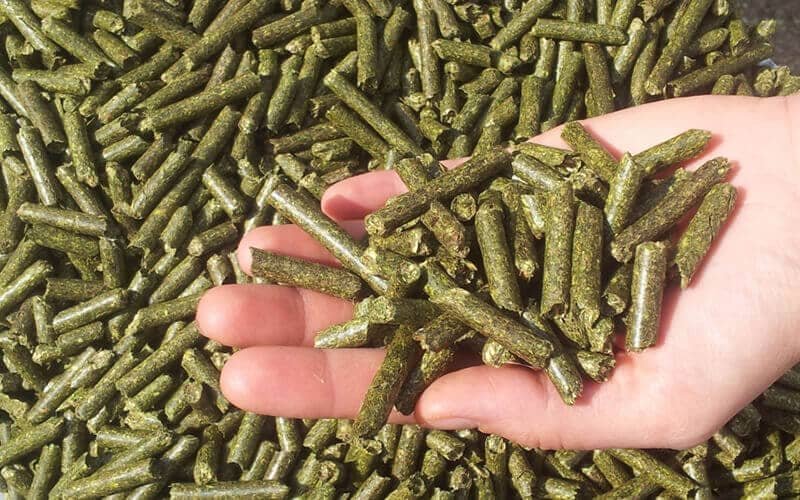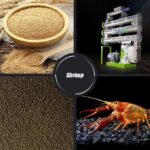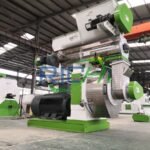Livestock feed pellet machines are versatile tools designed to transform a variety of feed ingredients into compact, digestible pellets. With the increasing demand for natural and sustainable animal feed options, many farmers and feed manufacturers are considering the production of grass feed pellets. This article explores the capabilities of livestock feed pellet machines in processing grass into feed pellets, the benefits of grass pellets, and the considerations involved in their production.
Capability of Livestock Feed Pellet Machines
Livestock feed pellet machines are well-suited for processing grass into feed pellets. These machines are designed to handle various fibrous materials, making grass a compatible option. Here’s why livestock feed pellet machines are effective for grass pellet production:
- Versatile Design: Most machines can process a wide range of ingredients, including fibrous materials like grass. They often feature adjustable dies and rollers optimized for grass pelletization.
- Effective Compression: The high-pressure compression in pellet machines effectively binds grass fibers together, resulting in stable pellets.
- Heat Generation: The friction generated during the pelletizing process helps partially break down the cellulose in grass, which may improve its digestibility.
- Moisture Management: Many pellet machines come with conditioning units that adjust the moisture content of the grass to optimal levels for pelletizing.

Benefits of Grass Feed Pellets
Processing grass into feed pellets using livestock feed pellet machines provides several advantages:
- Improved Storage and Handling: Grass pellets are more compact than loose hay or fresh grass, which reduces storage space requirements and makes transportation easier.
- Reduced Waste: Pelletizing grass minimizes waste during feeding, as the compact nature of pellets decreases the chances of feed being trampled or blown away.
- Consistent Nutrition: Pelletizing creates uniform feed particles, ensuring consistent nutrient intake. It also facilitates mixing with other feed ingredients for balanced rations.
- Extended Shelf Life: Properly processed and stored grass pellets can last longer than fresh grass or hay.
- Year-Round Availability: Grass pellets can be produced during abundant grass seasons and stored for use in times when fresh grass is scarce.
- Improved Digestibility: The pelletizing process can help break down plant cell walls, potentially enhancing digestibility for some animals.
- Versatility: Grass pellets can be used for various livestock species, including cattle, horses, sheep, and goats.
Considerations for Processing Grass Feed Pellets
While livestock feed pellet machines can process grass into pellets, several important considerations must be addressed:
- Moisture Content: Fresh grass has a high moisture content (70-80%), which must be reduced before pelletizing. The optimal moisture content for pelletizing is typically between 10-15%.
- Drying Process: An effective drying process is crucial for successful grass pellet production. This may involve field wilting, mechanical dehydration, or artificial drying methods.
- Particle Size: Grass may need to be chopped or ground to the appropriate size before pelletizing. Particle size can affect pellet durability and animal digestibility.
- Binding Agents: In some cases, adding natural binding agents like molasses may enhance pellet quality and durability.
- Pellet Die Selection: Choosing the right die hole size and thickness is essential for producing high-quality grass pellets. Dies may need more frequent changes when processing abrasive grass materials.
- Energy Consumption: Pelletizing grass can be energy-intensive, especially if artificial drying is required. Evaluating the energy efficiency of the entire process is important for cost-effectiveness.
- Nutritional Considerations: The nutritional value of grass can vary significantly based on species, growth stage, and growing conditions. Regular nutrient analysis of grass pellets is vital to ensure they meet animal nutritional requirements.
- Seasonal Variations: The quality and availability of grass can fluctuate seasonally, affecting pellet production and quality. Planning for these variations is crucial for consistent production.
Case Studies and Practical Applications
Several successful implementations of grass pellet production using livestock feed pellet machines have been reported:
- A dairy farm in New Zealand adopted a grass pelletizing system to preserve excess spring grass growth for use during drier seasons. This resulted in improved milk production consistency and reduced feed costs.
- An equine feed manufacturer in the United States developed a line of grass pellets specifically targeting horses with respiratory sensitivities, providing a dust-free alternative to hay.
- A sheep farmer in Ireland successfully pelletized a mixture of grass and clover, creating a high-protein feed supplement that improved lamb growth rates.
Technological Advancements
Recent advancements in livestock feed pellet machine technology have enhanced their ability to process grass:
- Improved Pre-conditioning: Advanced pre-conditioning systems allow for better moisture and temperature control before pelletizing.
- Variable Frequency Drives (VFDs): These systems enable precise control of machine speed, optimizing the pelletizing process for different types of grass.
- Automated Control Systems: Modern control systems can automatically adjust machine parameters based on the characteristics of the grass being processed.
- Wear-Resistant Components: The development of more durable dies and rollers has improved machine longevity when processing abrasive grass materials.
Conclusion
Livestock feed pellet machines are indeed capable of processing grass into high-quality feed pellets. This capability opens up numerous opportunities for farmers and feed manufacturers to create sustainable, nutritious, and easily manageable feed options for various livestock species.
The production of grass feed pellets aligns well with trends toward more natural feeding practices and efficient resource utilization in animal agriculture. By converting grass into pellets, producers can preserve seasonal abundance, reduce waste, and potentially improve feed digestibility and animal performance.
However, successful grass pellet production requires careful consideration of factors such as grass type, moisture content, particle size, and nutritional value. Proper equipment selection, process optimization, and quality control are essential for producing high-quality grass feed pellets.
As technology continues to advance and more research is conducted on grass-based feeds, we can expect further improvements in the efficiency and effectiveness of grass pellet production using livestock feed pellet machines. This development holds promise for more sustainable and efficient livestock feeding practices in the future. (Related post: feed mill pellet machine)


